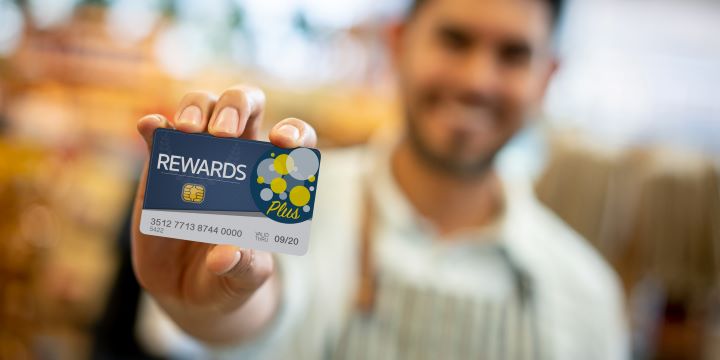Table of Contents:
- Key Takeaways
- Introduction to Loyalty Programs
- The Psychology Behind Loyalty Programs
- Enhancing Travel Experiences Through Loyalty Programs
- Comparing Loyalty Programs Across the Travel Industry
- Loyalty Programs and Budget Travel
- The Future of Loyalty Programs in Travel
- The Dark Side of Loyalty Programs
- Integrating Technology with Loyalty Programs
- Building Stronger Connections with Travelers Through Loyalty
- Creating a Sustainable Loyalty Program
Key Takeaways
- Grasping the comprehensive appeal of loyalty programs in the travel domain.
- Analyzing the psychological underpinnings that drive consumers to enroll in loyalty programs.
- Utilizing loyalty programs effectively to augment travel experiences and conserve travel expenses.
- Projecting the innovative shifts in travel loyalty programs and their implications for future engagement.
Introduction to Loyalty Programs
In travel, loyalty programs have transcended beyond a mere marketing tactic to become a core element of customer engagement and retention. These programs are designed to reward and thus encourage repeat business by offering points, discounts, or other perks. This rewards system has witnessed a significant transformation, expanding from a simplistic transaction-based model to a multifaceted ecosystem that caters to diverse traveler needs. Loyalty programs have cemented their role in the industry by drawing in new clientele with attractive reward potentials and nurturing an enduring relationship with existing customers. In today’s competitive landscape, these programs are a testament to a company’s commitment to valuing and understanding its patrons. Enhanced customer loyalty equates to recurring business, which is a win-win for consumers—who enjoy personalized perks—and businesses benefit from steady revenue streams and a loyal brand following.
The Psychology Behind Loyalty Programs
Loyalty programs are enigmatic attractions in the consumer market, mainly due to the fundamental human inclination towards rewards and recognition. The allure of earning points, which later translates to free or discounted services, incentivizes customers to choose some brands over others consistently. Programs structured to provide ascending tiers of rewards create an exciting challenge that stimulates consumers to aspire to higher levels of membership and the cachet that comes along with it. The effectiveness of this strategy is accentuated by the psychological phenomenon of ‘gamification,’ where the accumulation and redemption of points mimic the gratifying experience of playing a game and winning prizes for one’s loyalty. The ingenuity of these programs lies in their ability to offer various rewards, from earning hotel points on stays—such as those found through platforms or websites like https://www.retailmenot.com/view/bestwestern.com —to accruing miles that jet setters utilize for flights or seat upgrades.
This intricate dance of customer loyalty is often navigated through understanding human behavior and psychology. The reward systems intrinsic to loyalty programs play upon the motivational driver in humans to achieve more to receive more. A deep dive into consumer psychology reveals that these programs efficiently enhance customer satisfaction and loyalty by engaging individuals on both a behavioral and emotional level, thereby ensuring long-lasting brand relationships. Additionally, the exclusivity and status associated with advanced membership levels can influence spending habits, as customers often derive a sense of accomplishment from unlocking new benefits.
Enhancing Travel Experiences Through Loyalty Programs
The tangible benefits of loyalty programs in travel cannot be overstated; they not only confer monetary benefits but also have the potential to enhance the overall travel experience significantly. Unique experiences, personalized rewards, and preferential services are just a few advantages to dedicated program members. Whether it means basking in the comfort of a luxury hotel suite due to a complimentary upgrade or savoring the conveniences of airport lounge access, these loyalty perks can dramatically elevate the travel experience from mundane to extraordinary.
An exemplary loyalty program doesn’t merely redistribute earned points as discounts or services. Its strength lies in curating experiences that align with the lifestyle and preferences of the traveler. By doing so, the program transcends the essential utility of point collection to form an emotional connective tissue between the brand and the consumer. For instance, a loyalty scheme that rewards travelers with an exclusive cooking class at a local culinary institute or a bespoke city tour resonates on a more personal and memorable level, fostering a sense of community and belonging amongst its members. These experiences create loyal advocates who share their exceptional encounters with others, augmenting the brand’s reputation and reach.
Comparing Loyalty Programs Across the Travel Industry
Loyalty programs are not created equal, and a side-by-side comparison of those offered within different segments of the travel industry makes this abundantly clear. While airlines and hotels are keen to build loyal customer bases, their strategies and reward systems vary considerably. Airline loyalty programs are typically mileage-based, with the distance flown and fare class purchased dictating the number of miles earned. The prestige of tiered statuses in these programs often includes perks like priority boarding, complimentary seat upgrades, and lounge access.
Hotels, on the other hand, might lean toward creating a more intimate and luxurious experience, offering room upgrades, complimentary services, and personalized gestures to foster loyalty. Reward structure flexibility also plays a critical role; programs that allow for easy earning and redemption of points for a wide array of services are generally preferred by travelers. This flexibility and a transparent and straightforward earning system often tip the scale in favor of one loyalty program over another. Travelers value the ability to apply rewards annually, maximizing their return on investment for loyalty.
Loyalty Programs and Budget Travel
Loyalty programs have unequivocally debunked the myth that they are solely the domain of the affluent traveler. They offer myriad opportunities for budget-savvy travelers to extend their travel capacity without stretching their wallets. The strategic redemption of points or miles can result in discounted travel fares, free upgrades, or even complimentary stays, turning what would have been a standard trip into a more luxurious affair. Budget travelers who take the time to understand the intricacies of each program—the value of points, the expiration policies, and the best redemption opportunities—can extract significant value, often enjoying the kind of travel luxuries that might otherwise be beyond their means.
By judiciously selecting loyalty programs that align with their travel patterns and preferences and staying abreast of special promotions and partnerships that loyalty programs occasionally offer, even travelers with limited budgets can find themselves ensconced in the kind of travel comforts that seem custom-designed. As a result, loyalty programs serve as a financial hack for the budget traveler, making travel more accessible and enjoyable for a wider audience.
The Future of Loyalty Programs in Travel
As the travel industry continues to evolve, so do the loyalty programs that have become a cornerstone of the traveler’s journey. With the advent of advanced data analytics and artificial intelligence, the future of these programs lies in the ability to tailor offers and rewards to the individual preferences and behaviors of the traveler. This heightened personalization not only ensures that individual travelers feel valued but also increases the effectiveness of the loyalty program in fostering genuine engagement.
Experts from various fields provide insights into the future of loyalty programs. As a Forbes article highlights, the trend is to offer more immersive and experiential rewards beyond the prototypical point system.



